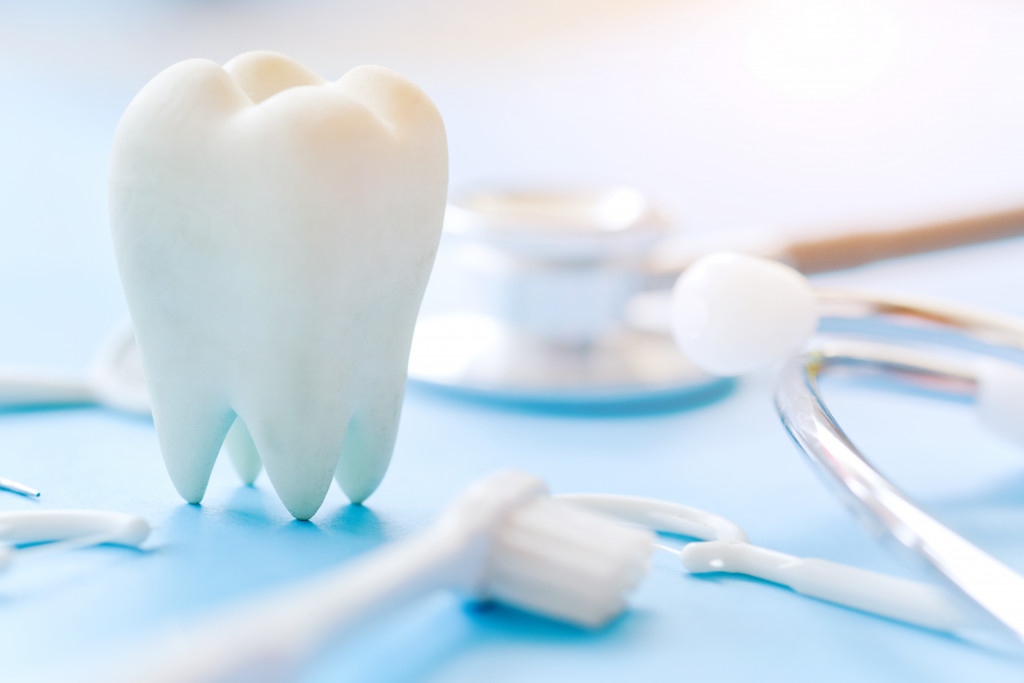Having a broken tooth can be an unpleasant experience, but it doesn’t have to be the end of your dental health. Fortunately, several options are available for repairing and restoring teeth damaged by trauma or decay.
Depending on the severity of the breakage, these solutions may range from simple bonding and reshaping to more complex treatments such as root canals and crowns. This article will explore all your options for fixing a broken tooth so you can return to smiling confidently.
Bonding
Bonding is a dental procedure that uses a tooth-colored composite to rebuild and restore a broken tooth. The material, which can simulate the look of natural enamel, is carefully applied and molded onto the prepared surface of the damaged tooth and then set with a special light.
You can use this to close small gaps between teeth, make teeth look longer, change the shape or color of teeth, conceal discoloration, or repair chipped or cracked teeth. This dental procedure works particularly well for minor cosmetic problems because it’s minimally invasive and doesn’t require any natural healthy tooth structure removal. Furthermore, bonding produces fast and effective results that look completely natural – no one would ever know you had such a treatment done!
Implants

Dental implants are one of the best solutions to replace broken teeth. It is a process that involves attaching a false titanium root system directly into the jawbone so that it can firmly hold a fake tooth in place.
This procedure may involve replacing more than one tooth as well. The replacement tooth or teeth look and function just like natural teeth due to the precise design of dental implants. Dental implants provide exceptional stability and comfort, require minimal maintenance, and help prevent bone deterioration from occurring.
They also improve speaking, eating, facial structures, and chewing – all capabilities lost with broken or missing teeth. In short, with proper care, dental implants have been known to last many years while restoring one’s standard mouth functioning capacities.
Reshaping
Reshaping is a standard dental procedure used to fix broken teeth. It is done by the dentist taking away part of the tooth that has been damaged, then contouring or reshaping it for a more pleasant appearance and to fix the fracture.
This works effectively as it trims away what is undesired and rebuilds the tooth’s surface with filling or bonding material to ensure a strong and natural finish to the tooth, similar to its original shape/form. Overall, reshaping can effectively fix broken teeth and restore them to their natural state.
Root Canals
Root canals are an effective treatment for repairing broken teeth and leveling decay. The procedure involves drilling into the tooth to remove the damaged nerve, tissue, and bacteria from within.
Once this material is removed, the tooth is filled with a strong filling material such as gutta-percha and sealed off to protect it from future harm. With a root canal procedure, the entire tooth structure remains intact, allowing its function to be fully restored.
Root canals have very high success rates even when using older technology and are considered the go-to option in dentistry when dealing with certain kinds of broken teeth. There’s a good reason why many people opt for a root canal before attempting more invasive treatments like dental implants or extractions – they provide an effective and painless solution that returns teeth to their former glory.
Crowns
Crowns are a popular and effective way to repair broken teeth. A crown, otherwise known as a cap, is a cover that fits over the remaining portion of the tooth to restore strength, size, and shape to the tooth.
This process typically requires two visits; one for preparation, where the dentist removes any damage or decay on the tooth and reshapes it as necessary to fit in the new crown. The second visit is for fitting the crown, made from impressions taken during the first visit.
Once sealed, a crown effectively helps restore chewing function and mimics a natural tooth’s appearance with enhanced durability compared to a filling, providing more stability and protection from further fractures. When placed by an experienced dentist, this simple procedure can provide years of reliable use and save one from enduring greater dental treatments.
Veneers
Veneers are an increasingly popular way for patients to fix broken teeth. This dental procedure involves placing thin pieces of porcelain directly onto the surface of the existing broken tooth, essentially providing a brand-new look and feel.
For those who have chipped or cracked teeth that don’t require significant reconstruction, veneers can be a great option to have them look beautiful without undergoing more invasive procedures. The process is simple – after an initial consultation and evaluation with your dentist, the enamel on the front part of the decayed or damaged tooth is filed down to prepare. Then a customized porcelain veneer is placed over it.
Then, once this entire process is completed, you now have a beautiful smile! Veneers are highly effective in fixing broken teeth since they are so thin yet durable that they mimic the natural-looking appearance of healthy teeth, making them practically indistinguishable from each other.
These are some of the most common ways to fix broken teeth. Depending on your situation, there may be one option that is more suitable for you than others. Don’t hesitate to ask your dentist about any of these procedures so you can make an informed decision and get back to having a healthy smile!
